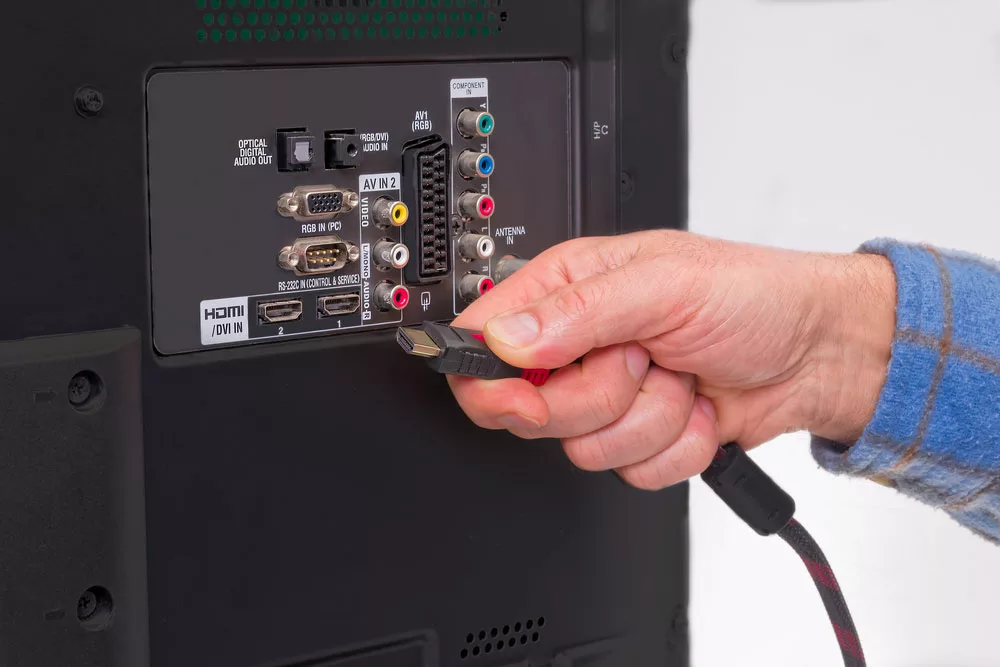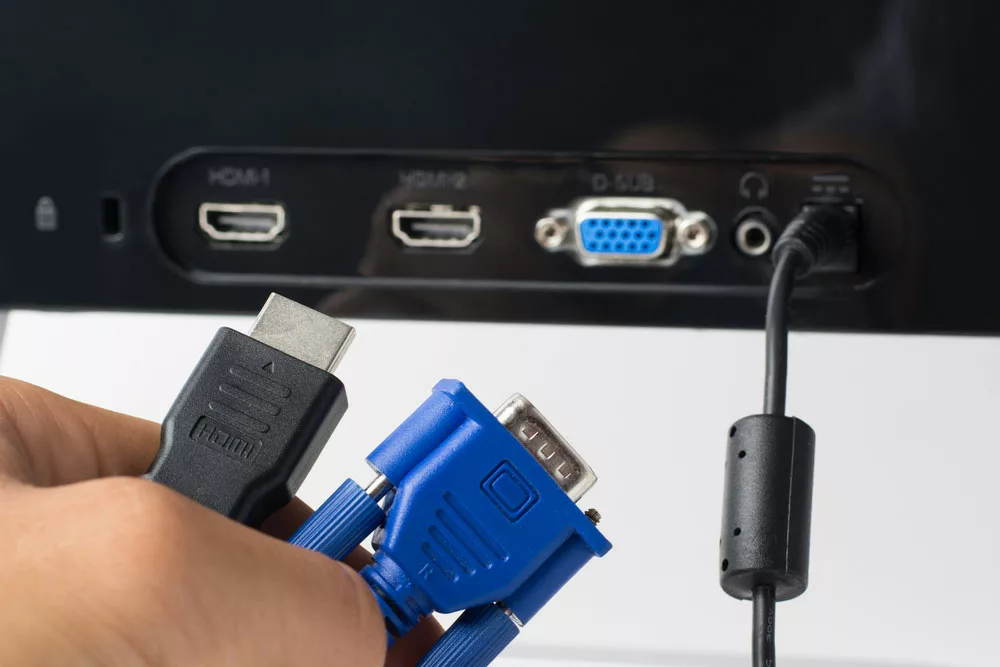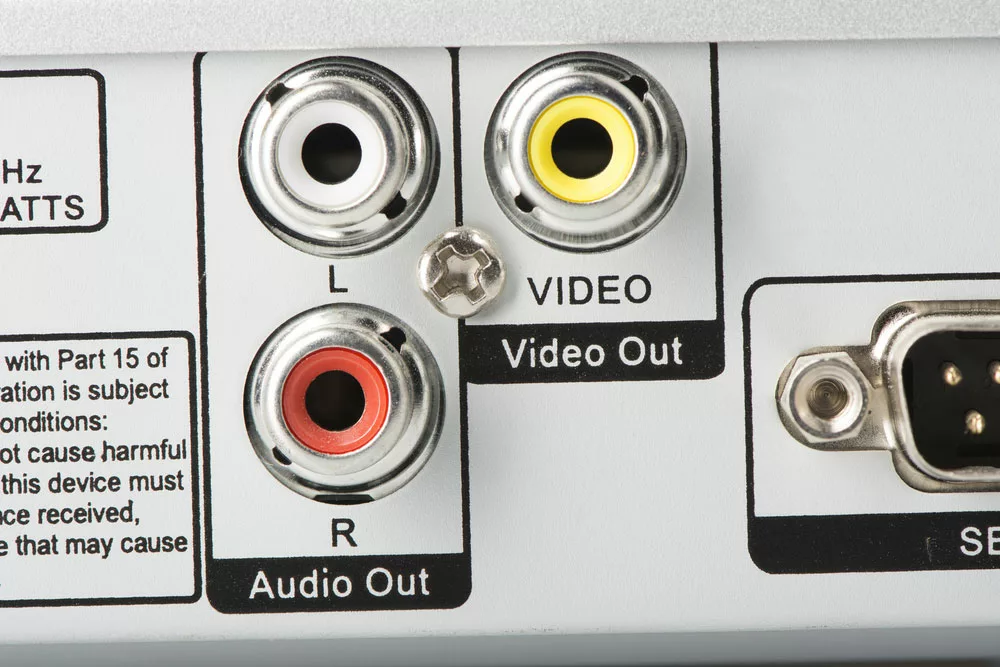When you see “No Signal” on your screen – don’t rush to replace your entire device. Sometimes, the HDMI port causes the problem. There are more other ports back your TV. Now we’ll dig into the alternative HDMI cable.
Table of Contents
- Why does HDMI get its section?
- Alternatives to HDMI cable for connecting TV and receivers
- How to Connect Your TV And Receiver Without HDMI
- Conclusion
Why does HDMI get its section?
HDMI is the port of choice for all modern devices.
It’s one of the most common and useful ports for video and audio on a TV. Just plug in one cable, and things will be OK. How easy it is to set up your TV with HDMI.
Also, most computers are equipped with HDMI ports, so you can use an HDMI cable to connect your PC to your TV.
You can even plug in a streaming device like a Roku or Amazon Fire TV Stick to turn your old TV into a smart TV.
HDMI transmits data digitally without compressing or distorting information, providing the highest quality picture and sound.
Alias: HD Media Input
Signal Type: Digital
Maximum Resolution: 4K Ultra HD
Associated devices: DVRs, media players, modern game consoles, sound systems, computers, and streaming devices

A hand-holding HDMI cable
Alternatives to HDMI cable for connecting TV and receivers
However, what if your old TV/receiver doesn’t have an HDMI port or your smart TV/receiver’s HDMI TV is bad?
Options Using RCA Cables
RCA cables, or Radio Corporation of America cables, have been around since the 1940s, so we certainly got our money’s worth. The RCA cables carry audio and video signals from the point of origin, such as a disc or tape player, to the point of destination, which may be television or stereo speakers.
RCA ports are no longer viable since they are restricted to 480p and are only suitable for images that do not require high resolution. Consider the RCA cables when HDMI cables and ports appear useless.
There are lots of different RCA cables available that contain several connectors:
1. Basic RCA Audio Cables
RCA Audio cable has two cables: a red cable and a white cable transmitting audio. How to connect your TV to your receiver? Match the red and white cables to these devices’ red and white jacks.
2. Composite RCA Cables
Composite RCA cables share the same purpose as HDMI cables — transmitting audio and video signals from Receivers to Displays.
Why do we call it a composite video cable? Because there is only one cable for video transition: the yellow one.
In addition, the classic red and white cables are for analog audio signals.
Also, match the cables to the jacks with the same color to connect your TV to the receiver.
3. Component RCA Cables
Different from the Composite RCA cables, three cables transmit a video signal in a component video cable.
To transmit video and audio from your TV to your receiver, you’ll need to use the 5 RCA component cables, which include the two audio cables: red and white, and the three video cables: green, blue, and red.
Using an HDMI Converter
You will need an inexpensive adapter or a converter to get the signal into the TV.
1. HDMI to RCA converter
RCA ports are not good enough because the image quality is limited to 480p. Why such a low resolution? Because there is only one cable for all colors. Suppose you don’t need high-resolution images and want simple video demonstrations. Also, it works well with old pixelated video games.
2. HDMI to SCART converter
SCART ports produce a quality of 576p which is quite limiting, so it is not a good solution either. In addition, the SCART socket has faded over time, and a second device, such as a console, computer, or box tv, no longer uses it.
3. HDMI to YPbPr converter
The YPbPr port is limited to 720p or 1080i, making some images blurry. However, most new televisions are compatible with 1080p, making the best picture possible. So, the converter is a good solution if your TV supports the system.
4. HDMI to VGA converter
You can see VGA ports on most secondary devices. It is compatible with 1080p. But it only transmits video signals. Connecting a 3.5 mm audio jack cable between the TV and the converter would be best for hearing a sound.
By VGA to VGA cable with an audio jack cable
When hooking up your system, you may find that the secondary device does have an available VGA female output, which reduces the price of a converter or adapter.
These solutions work because these ports will unlikely become obsolete or out of service due to the lack of switchover the HDMI port uses. In addition, the system is improved if your HDMI input is male and the RCA, YPbPr, or VGA outputs are female.

Different types of A/V ports
How to Connect Your TV And Receiver Without HDMI
When connecting your TV and receiver without HDMI, it is crucial to know which cables you’ll need, depending on your devices’ available ports. Then, you should find the correct cables for the job and return to work.
1. Power On Your TV and Your Receiver
Sep one is to power up both the TV and receiver.
2. Plug the Cable(s) and/or Converter In
Take care to match the appropriate plugs for both units. The labels indicate ‘Audio,’ Component,’ or ‘Composite.’ Then, look for the cable end colors to determine which cables go where.
3. Change the TV’s Default Speaker to the External Speakers You’ve Connected
It depends on your TV type, but pay attention to the TV’s primary settings. For this step, you will need to change your TV’s preference settings from ‘Internal Speaker’ to ‘External Speaker.’
4. Test Your Setup
After everything is set up and connected, check to see that the volume control is working correctly on your TV. If you hear the music or dialogue, you’re all set. Also, when replacing your TV or receiver, unplug the connections and use the same setup on the new devices.

Colored connection
Conclusion
Don’t be discouraged if you can’t connect your TV and receiver with a classic HDMI-to-HDMI cable. Using one of the above options, you can successfully connect your TV and receiver for a higher-quality home audio experience.
